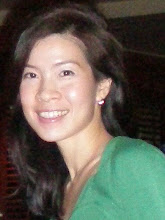
We got for our son a very special birthday card this year (as seen above). In it, he had to crack a code in order to uncover what was wished for him in the card. So it is with DNA in our cells. The genetic information on DNA is written in a code - THE GENETIC CODE!
Recall, in my post before this titled "The DNA double helix - a story of 2 perfectly paired strands", I explained that there are 4 nitrogenous bases used in making a strand of DNA. These are adenine (A), thymine (T), cytosine (C) and guanine (G). These 4 bases (A,T,C and G) are used like letters in an alphabet. The sequence of these bases on DNA code for specific genetic information.
In order to use the encoded genetic information, the sequence of DNA bases is first copied onto RNA (ribonucleic acid) by a process called "transcription" (I will elaborate on this process in another post...for now, all you need to know is that DNA is copied onto RNA).
In RNA, the bases A, U (uracil), C and G bases are used. Notice in RNA there is no "T" , unlike DNA. Instead, a "U" is used in place of "T" in RNA. Recall, from my previous post, the nitrogenous bases in DNA exhibit complementary base pairing, where "A" pairs with "T" and "C" pairs with "G". It is via this complementary base pairing that the sequence of bases in DNA gets copied onto RNA. As in DNA, "C" pairs with "G". However, unlike DNA, "A" pairs with "U" in RNA (due to the absence of "T").

Every 3 bases on RNA code for 1 amino acid - where an amino acid is the building block of proteins. Hence, by reading every 3 bases on RNA, the cell is able to string together a chain of amino acids. We call this a "polypeptide" chain. Subsequently, each polypeptide chain made from RNA will be folded into a functional protein to be used by the body.
Below is the GENETIC CODE, showing which combination of 3 bases on RNA codes for which amino acid. Each of these combination of 3 bases on RNA is called a "codon".

From the above genetic code, we see that the codon "AUG" codes for the amino acid "methionine" and the codon "AAA" codes for the amino acid "lysine".
Each amino acid may also be represented using a single letter code as shown in the table below.

So, the codon "AUG" codes for the amino acid "methionine", which can be represented by the single letter code "M". And the codon "AAA" that codes for the amino acid "lysine", can be represented by the single letter code "K". Note that the single letter representation for the amino acid need NOT correspond to the first letter of that amino acid!
Having understood the genetic code...now try decoding my New Year's wish for you below! You can do so by matching each codon to its amino acid. Then match the amino acid coded for to its single letter code.
Eg. "AUG" - "M" and "AAA" - "K".
AUG GCC AAU UAUCAC GCG CCC CCA UACGAC GCA UAU UCA !Managed to crack my "New Year's wish" code?! Check back for my next post to see if you got the answer right! Good luck!
 Thanks to all who still drop by my blog even though it hasn't been updated in ages!!! I've been busy with my classes as you can see from above.
Thanks to all who still drop by my blog even though it hasn't been updated in ages!!! I've been busy with my classes as you can see from above.


